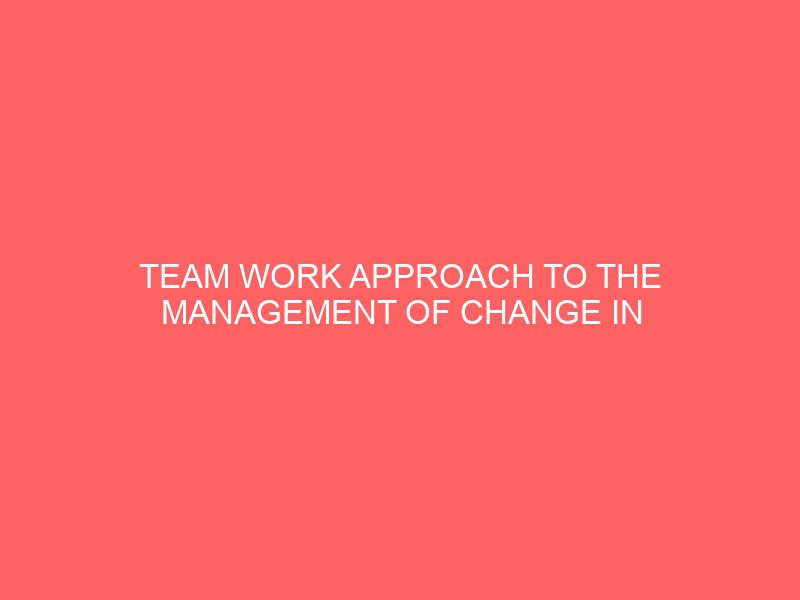Description
CHAPTER ONE
INTRODUCTION
1.1 Background of the Study
Groups and teams are a major feature of organizational life. To Katzenbach and Smith (1993:111-120), a work team is a group of people with complementary skills who are committed to a common mission, performance goals, and approach for which they hold themselves mutually accountable. Work is a group-based activity and if the organization is to function effectively, it requires collaboration and co-operation among its members (Mullins, 2010:307). However, Nelson and Quick (2005:178) go further to differentiate between groups and teams, they affirm that all work teams are groups, but not all groups are work team, groups emphasize individual leadership, individual accountability, and individual work products. Work teams emphasize shared leadership, mutual accountability, and collective work products. Teams are increasingly becoming the primary means for organizing work in contemporary business firms (Robins and Judge, 2007:338). Most activities of the organization require at least some degree of co-ordination through the operation of groups and team work. Mullins (2010:306) goes further to explain that an understanding of the nature of groups is vital if the manager is to influence the behavior of people in the work situation. The manager must be aware of the impact of groups and teams and their effects on organization performance. Organizations are increasingly making use of teams to achieve their objectives. Teams occur when a number of people have common goal and recognize that their personal success is dependent on the success of others (Ugbam, 2011:336). Organizational teams need to accomplish corporate goals. While the organization is a hub of all activities, teams are the spokes, which generate output. Teamwork can yield much more than a sum of individual efforts simply due to organized effort and streamlined work processes. Work efficiency is enhanced and needless multiplication of processes is eliminated (Nzewi, 2006:14). Decades ago, when companies like W.L. Gore, Volvo, and General Foods introduced teams into their production processes, it made news because no one else was doing it. Today, it?s just the opposite; it?s the organization that does not use teams that has become news worthy (Robins and Judge, 2007:338). From late 1990?s, approximately 80 percent of Fortune 500 companies now have half or more of their employers on teams. And 68 percent of small U.S. manufacturers are using teams in their production areas (Strozniak, 2000:47). How do we explain the current popularity of teams? The evidence suggests that teams typically outperform individuals when the task being done requires multiple skills, judgment, and experience (Glassop, 2002:225-250). As organizations have restructured themselves to compete more effectively and efficiently, they have turned to teams as a better way to use employees? talents. Robins and Judge (2007:338) are of the opinion that teams have the capability to quickly assemble, deploy, refocus and disband. As a result, management has found that teams are more flexible and responsive to changing events than are traditional departments or other forms of permanent groupings. Teams can compete, wrestle, succeed or fail. A good organizational team can be an invaluable asset to the organization. A bad team can break the internal structure of the organization (Nzewi, 2006:14). Also Coles (2002:19) in his own opinion says that it is also important that teams enjoy reasonable autonomy. When teams enjoy autonomy they are empowered (Gibson, 1996:23). Onodugo and Igwe (2010:95) maintain that, team building is one of the key imperatives for a successful organization. Team-building is seen as one aspect of organizational development strategy that







